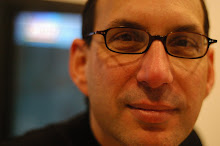We no longer have to rely on old cultural prophecies as to who is the right consumer for the right message. It no longer has to be microsample-based [à la Nielsen or Simmons]. We now have [total-population] data, and that changes everything. With [those] data, you can know essentially everything. You can find out all the things that are nonintuitive or counterintuitive that are excellent predictors. ... There's a lot of power in that.
- Dave Morgan, Founder of the behavioral targeting firm Tacoda, now owned by AOL
In Bob Garfield, "Your Data With Destiny," Advertising Age, September 15, 2008
Morgan's quote reflects current beliefs about the use of data-mining that are reshaping the media system. The idea is that instead of making predictions about specific customers based on general surveys of people like them, marketers should track the customers themselves in ways they may not know. The assertion is that findings from such tracking can lead to accurate predictions about products and persuasive techniques that will appeal specifically to those targeted individuals. Garfield gives interesting examples of how that can work from basic collaborate filtering technologies (as with Amazon and Netflix) to more sophisticated activities via Taboola and My6Sense.
Implicit in his piece—but as important as the main theme—is a view that has begun to take hold in parts of the marketing community: that survey samples (for example, Nielsen’s TV, internet, and billboard samples) should be replaced by population samples via set-top-box data, behavioral tracking, and other methods. In that connection, the Advertising Research Foundation (ARF) has convened “forums” on the topic later this month and next month that will valorize tracking “entire” populations and foreground buzz and other techniques that supposedly get close to the consumers in unobtrusive ways.
"I don't know if we are going to have a choice but to move away from survey research," Donna Goldfarb, VP-consumer and market insights for Unilever Americas is quoted as saying in another Ad Age piece. "We continue to torture consumers with boring and antiquated search methods. What's holding us back is history and norms. But I work in a business where I think most of the senior leadership is still very frustrated with the tools that we are using."
The Ad Age piece acknowledges that firms such as Unilever and P&G continue to spend lots of money on surveys. (P&G spent $200 million on research vendors in 2006.) Yet statements such as Goldfarb’s “signal a shift in paradigms, and most likely budgets, away from surveys and toward mining insights from blogs, social networks, consumer comments to websites and more,” according to Joel Rubinson, chief research officer of the ARF. They also may signal that the audience research that emerges may create increasing tensions around issues of privacy.
Thursday, September 18, 2008
Subscribe to:
Post Comments (Atom)


No comments:
Post a Comment